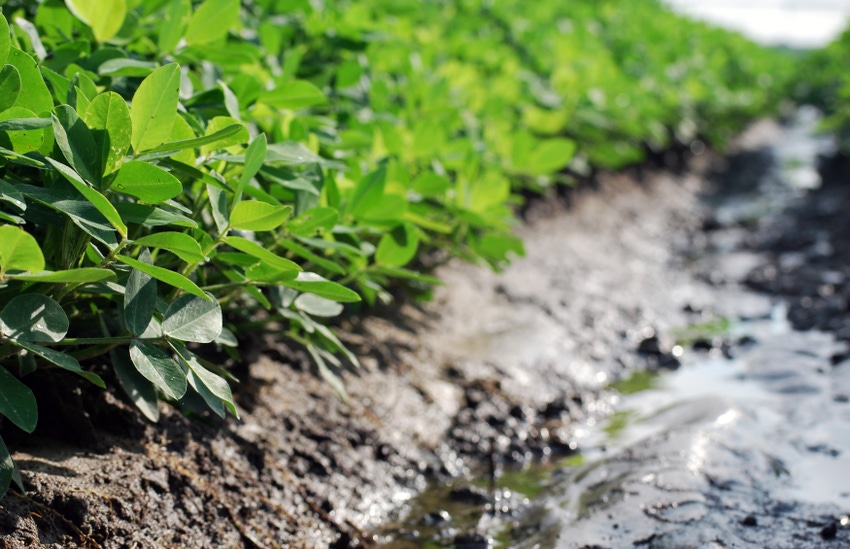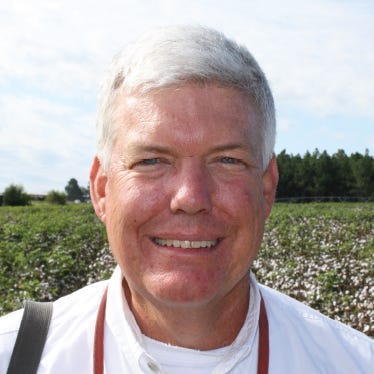
The heart of the peanut disease season lies in the heat and humidity of August. Though the sparks that flare leaf spot, white mold and damage from nematodes occurred weeks to months ago, diseases smoldering quietly explode with continued crop development and favorable weather.
County agents, consultants and Extension specialists don’t have to worry about becoming the Maytag Repairman. He was the man no one ever called; the loneliest guy in town presumably because he worked on Maytag appliances, which according to advertising, never broke down. I never wanted to be that guy.
These days my phone rings frequently. Early in the morning, late at night, on weekends and holidays, the buzz of my phone announces that another text has arrived or call is waiting and an answer is needed.
The most common questions I receive now concern best choices for fungicides when diseases threaten. The best fungicide is the one that makes the grower the most profit based upon yield, efficacy and cost and is appropriate for resistance management.
Fungicide selection is more complicated now because:
Much of our crop is “late” from delayed plantings.
New fungicides like Miravis, Umbra, Domark and Acropolis are available.
Some fungicides have been in short supply.
And older, nearly-forgotten fungicides are getting a second look.
New fungicides, which cost hundreds of millions of dollars to bring to market, are developed to be more effective at lower rates than were older fungicides. However, their very narrow mode of action often makes newer fungicides vulnerable to resistance as disease-causing organisms find ways to overcome them.
When resistance occurs, fungicides don’t work as well as they have in the past and may not work at all. Older fungicides, like chlorothalonil, are broad spectrum products and less prone to resistance. Research results presented recently at the annual meeting of the American Peanut Research and Education Society highlighted not only the promise of new fungicides like Miravis, but also hinted at continued utility of older, often dimly-remembered fungicides, in today’s management programs.
My presentation described how Miravis can provide excellent leaf spot control and increased flexibility to disease management programs in peanut. In his presentation, Dr. Albert Culbreath invited us to travel back to the 1960s and early ‘70s, showing that use of sulfur and mancozeb can be beneficial, though they have not been used recently. Just as riding the “Jamestown Ferry” on the way to Williamsburg, the APRES meeting unexpectedly took my thoughts back to Tanya Tucker and 1972, Albert’s research may take farmers back to a place long forgotten in terms of peanut disease control.
Sulfur, as Dr. Culbreath reminded us, is one of the oldest pesticides known and was even described by the ancient Greek Homer. For a time, sulfur dusts were used extensively for control of leaf spot diseases of peanut and provided some disease suppression. However, sulfur was not highly effective and use diminished greatly after the introduction of fungicides such as benomyl and chlorothalonil. Both of these products were much more effective and easier to use.
In recent years, sprays of wettable formulations of sulfur have been used as much as for nutritional benefits (greens them up) as for enhanced disease control when mixed with chlorothalonil. Dr. Culbreath’s research suggests that mixing a dispersible formulation of sulfur with DMI fungicides like tebuconazole or cyproconazole may improve leaf spot control noticeably compared to the fungicide alone, though sulfur by itself provided little control. Additional trials are in progress to determine how consistent beneficial effects may be.
Mancozeb was introduced in 1962, and in the early 1970s was mixed with benomyl and applied to peanuts in Texas and Oklahoma. Mancozeb has activity against leaf spot diseases and rust, but at standard rates has typically been inferior to chlorothalonil for leaf spot control. Recent experiments with combinations of mancozeb and at least one DMI fungicide (flutriafol), indicate that the mixture was better than chlorothalonil for leaf spot control, although costlier.
Current problems of apparent resistance in the leaf spot pathogens to DMI and strobilurin fungicides coupled with the shortage of chlorothalonil have prompted revisiting mancozeb as a mixing partner with these fungicides. Mancozeb is a protectant with low risk of resistance; it may have potential to help preserve the utility more at-risk fungicides should resistance problems develop.
It is critical during the dog-days of August to be timely and aggressive with fungicide programs to protect a peanut crop from diseases. Excellent options are brought to growers with release of new fungicides; careful re-examination of older chemistries is beneficial as well. Although neither mancozeb nor sulfur alone provide high levels of control, they may still have a helpful role today.
About the Author(s)
You May Also Like






